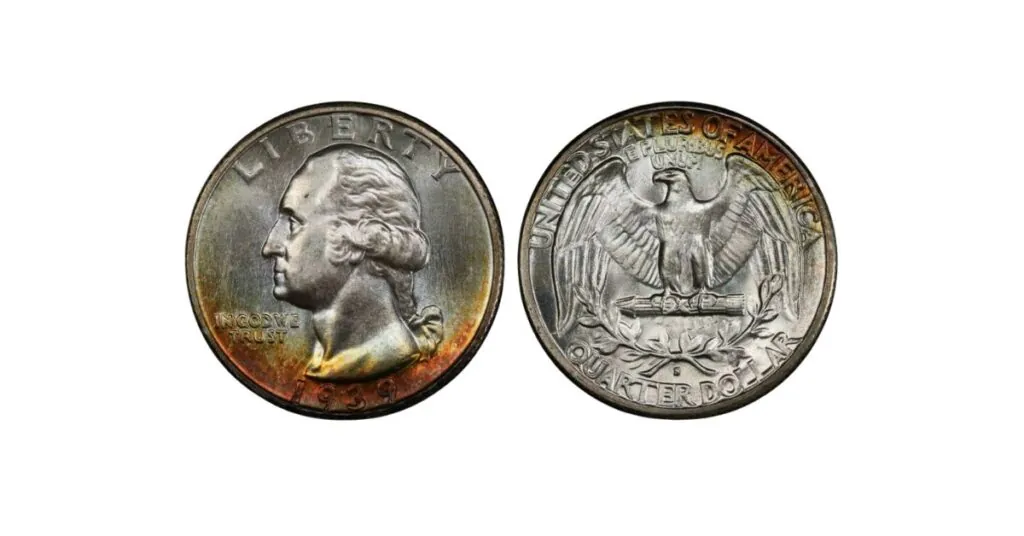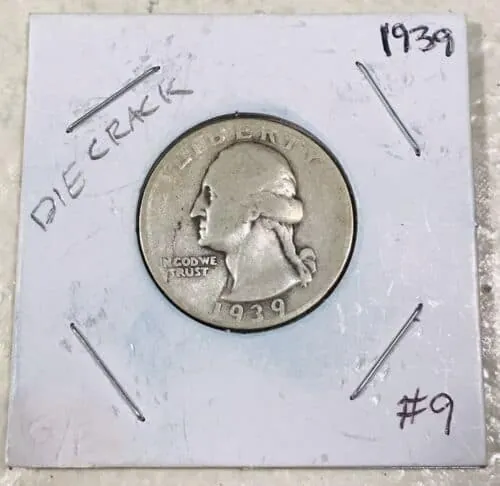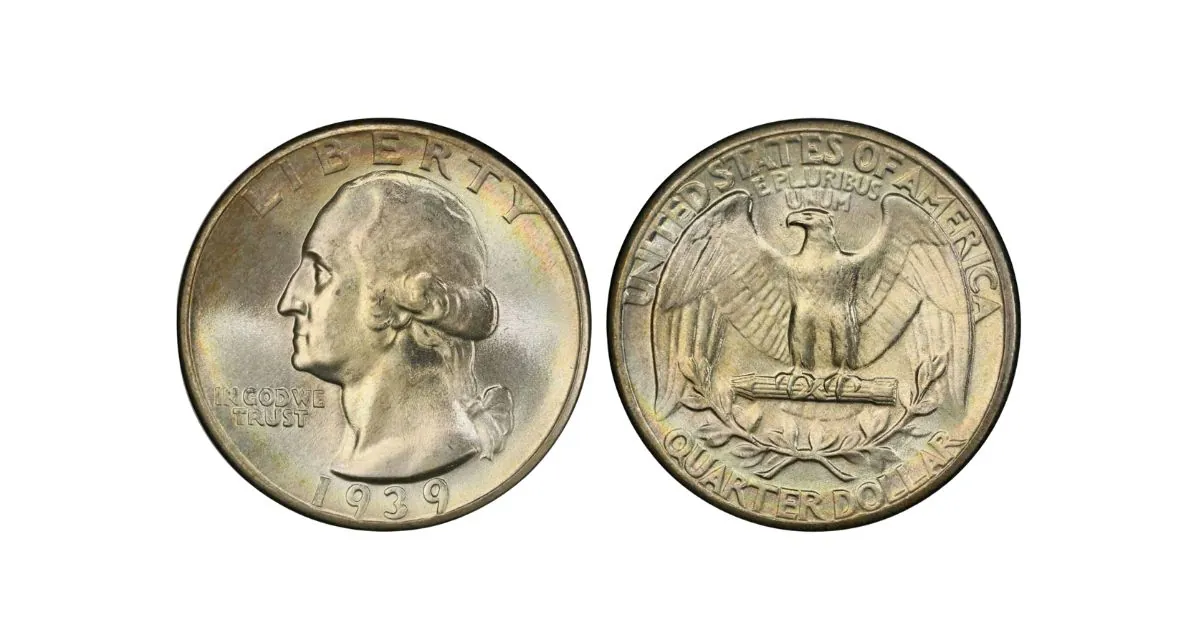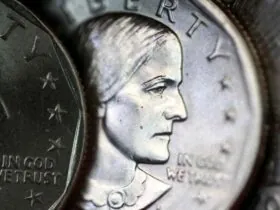The Washington Quarter, a symbol of American coinage, has remained a staple since its inception in 1932. Although its composition has changed over the years, its design has remained remarkably consistent, making it a favorite among collectors. The 1939 Washington Quarter, in particular, holds special value due to its historical context, variations, and errors. Let’s delve into the specifics of this fascinating coin, including its current value, unique features, and collectible appeal.
1939 Washington Quarter Overview
This Article Includes
The 1939 Washington Quarter is instantly recognizable, as its design closely resembles modern quarters. However, its composition of 90% silver and 10% copper gives it intrinsic value beyond its face value. At minimum, even a heavily worn 1939 quarter holds a value equivalent to its silver content, which is approximately $4.26 at current silver prices.
For collectors, the coin’s worth significantly increases based on its condition and rarity. Coins in better grades, especially those with unique errors or in uncirculated states, can command prices in the hundreds or even thousands of dollars.
Value Chart for 1939 Washington Quarters
| Mint Mark | Good | Fine | Extremely Fine | Uncirculated (MS 60) |
| 1939 “D” | $10.98 | $10.98 | $18 | $51 |
| No Mint Mark | $10.98 | $10.98 | $12.43 | $21 |
| 1939 “S” | $10.98 | $14 | $36 | $117 |
| Proof (No Mint Mark) | N/A | N/A | N/A | $244 |
Grading the 1939 Quarter
The value of a 1939 quarter heavily depends on its grade, determined using the Sheldon Coin Grading Scale. This 1-to-70 scale assesses a coin’s quality, with higher numbers representing better conditions. The following are the main grades for 1939 quarters:
- Good (G-4 to G-6): Coins show significant wear but retain basic design details.
- Fine (F-12 to F-15): Moderate wear with more visible details.
- Extremely Fine (EF-40): Slight wear on high points but overall sharp details.
- Mint State (MS-60 and above): No signs of wear, often pristine.
Coins graded MS-68 or higher can fetch extraordinary prices due to their rarity and immaculate condition.
Variants of the 1939 Washington Quarter
1. 1939 “D” Quarter (Denver Mint)

The Denver Mint produced 7,092,000 Washington Quarters in 1939. Despite its relatively low mintage, this variant tends to be less valuable compared to others. The design features George Washington’s profile on the obverse and an eagle with spread wings on the reverse. Notable sales include a 1939 “D” quarter in MS-68 condition, which sold for $14,400 in 2022.
2. No Mint Mark Quarter (Philadelphia Mint)

Philadelphia’s 1939 quarters, with a mintage of 33,540,000, are the most common. These coins lack a mint mark, as was customary for Philadelphia-minted coins until the 1980s. Despite their higher production, uncirculated specimens can still fetch impressive prices. A top sale includes $5,052 for an MS-68 coin in 2019.
3. 1939 “S” Quarter (San Francisco Mint)

With only 2,628,000 coins minted, the San Francisco quarter is the rarest of the regular-strike variants. Its “S” mint mark appears under the olive branches on the reverse. Coins graded MS-67 or higher often sell for thousands of dollars, with some exceeding $10,000.
4. Proof Quarter (Philadelphia Mint)

The Philadelphia Mint also produced 8,795 proof quarters in 1939. These coins, crafted with specialized dies, feature a polished finish and exceptional detail, making them highly desirable among collectors. A proof 1939 quarter can reach prices of $244 or more, depending on its condition.
Rare Errors in the 1939 Washington Quarter
Errors add another layer of intrigue and value to the 1939 Washington Quarter. Here are some of the most notable errors:
1. Double Die Error

This occurs when a coin’s planchet shifts slightly between two strikes, causing a blurry, doubled appearance on some design elements.
2. Wrong Planchet Error
A wrong planchet error happens when a blank intended for another coin ends up being struck by the quarter’s dies, leading to mismatched design and size.
3. Die Crack Error

Overused dies can develop cracks, which transfer unique lines onto the minted coins. These errors are rare and highly sought after.
Selling Your 1939 Washington Quarter
Collectors have numerous avenues for selling their 1939 Washington Quarters, including online platforms, coin dealers, and auctions. For maximum value, it’s essential to have your coin appraised and graded by a professional service such as PCGS or NGC. Additionally, researching market trends and recent sales can help ensure a fair price.
FAQs About the 1939 Washington Quarter
1. Is a 1939 quarter pure silver?
No, it’s composed of 90% silver and 10% copper.
2. Is a 1939 quarter worth anything?
Yes, even in poor condition, its silver content ensures a base value of at least $4.26. In higher grades, it can be worth hundreds or even thousands of dollars.
Conclusion
The 1939 Washington Quarter is more than just a piece of currency; it’s a window into America’s past. Whether you’re a seasoned numismatist or a curious newcomer, understanding the coin’s value, variations, and unique errors is key to appreciating its worth. With its blend of historical significance and collectible appeal, the 1939 Washington Quarter remains a treasured artifact in the world of coin collecting.
Read More:
- The Kennedy Half-Dollar: A $15,000 Coin That’s No Longer in Circulation
- This 5-cent Coin, The Peace Medal Jefferson Nickel, Could Be Worth Up To $2,750: Only 20 Years Old And Minted In Philadelphia
THIS IS ONLY A BLOG POST FOR INFORMATION – WE DO NOT BUY, SELL, OR APPRAISE THESE ITEMS







Leave a Reply